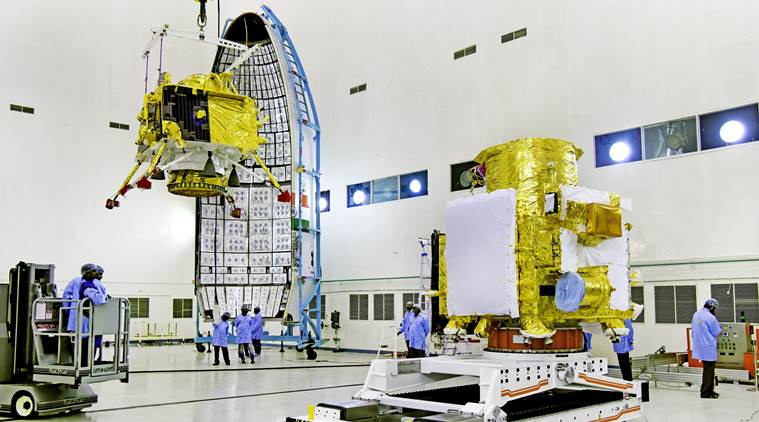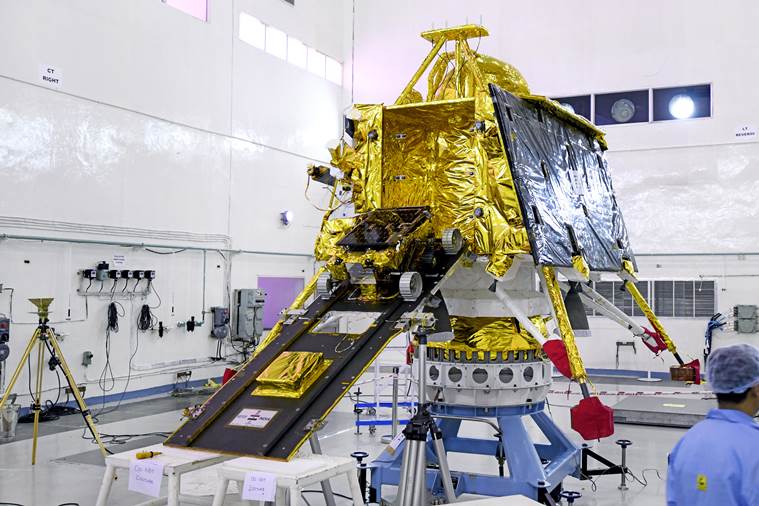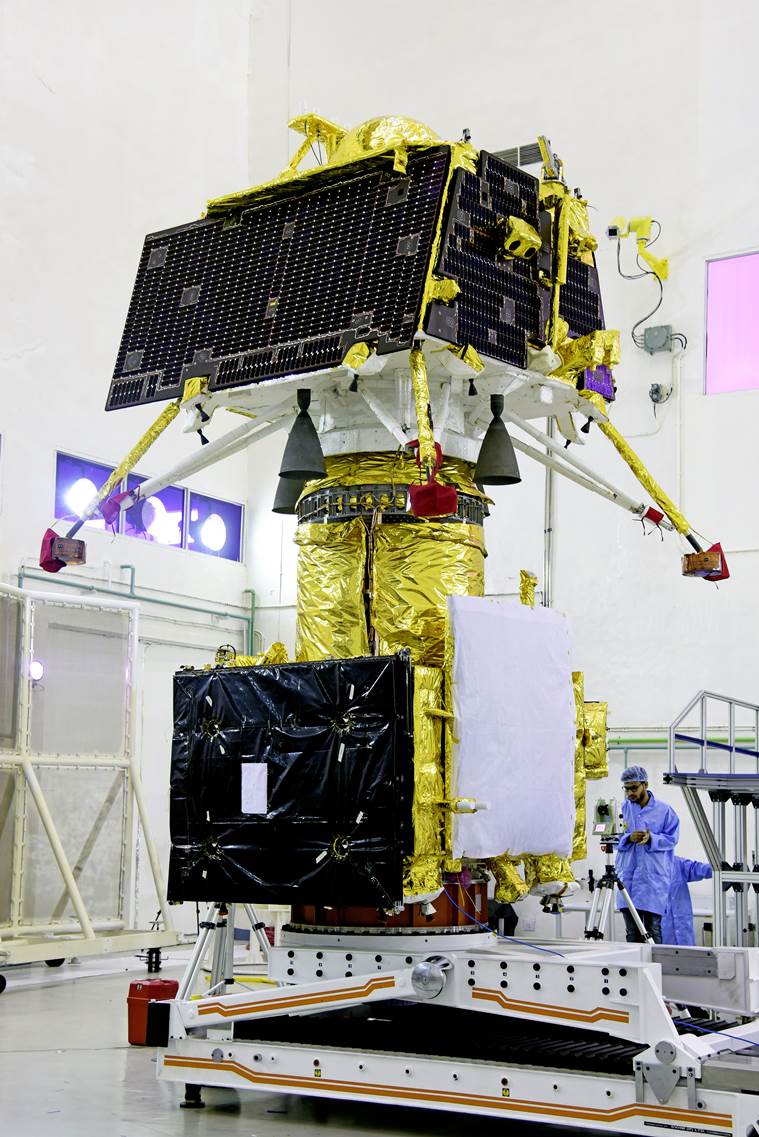Chandrayaan-2 new images released by ISRO ahead of launch
Originally scheduled to be launched in 2012, the mission was faced with problems which left the responsibility on ISRO to design, develop and build the lander on its own.
 Hoisting of Vikram lander during chandrayaan2 spacecraft integration at launch centre. (Source: ISRO)
Hoisting of Vikram lander during chandrayaan2 spacecraft integration at launch centre. (Source: ISRO)
A week away from its launch, the Indian Space Research Organisation (ISRO) has released new images of Chandrayaan-2 satellite. Its lander and rover, called Vikram and Pragyaan respectively, are presumed to touch down on the moon’s surface on September 6.
A natural sequel to the Chandrayaan-1, the second exploratory mission to Moon has taken a long time. Originally scheduled to be launched in 2012, the mission was faced with problems after Russians withdrew from it, which put the responsibility on ISRO to design, develop and build the lander on its own.
 Pragyan Rover mounted on the ramp projecting from out of the sides of Vikram Lander. (Source: ISRO)
Pragyan Rover mounted on the ramp projecting from out of the sides of Vikram Lander. (Source: ISRO)
While the first mission was designed to just orbit the Moon and make observations with instruments on board, Chandrayaan-2 is created to land on the Moon. This development makes India, only the fourth country to land a spacecraft on Moon.
EXPLAINED | Chandrayaan-2: What Moon can hold for India
Chandrayaan-2, the Rs 1,000-crore mission, consists of an Orbiter, Lander and Rover, all equipped with scientific instruments to study the Moon.
 Vikram lander mounted on top of the orbiter of chandrayaan2. (Source: ISRO)
Vikram lander mounted on top of the orbiter of chandrayaan2. (Source: ISRO)
It is the first time that ISRO is attempting to soft-land a module in extra-terrestrial space. The main challenge is in controlling its speed as it approaches the surface. Once the Lander and the Rover, enter the Moon’s gravity, they would be in a state of free fall.
That could end in crash-landing and destruction of the instrument; because of lack of air to provide drag, these instruments cannot make use of parachute-like technologies. Instead, the Lander fires thrusters in the opposite direction to slow down. To enable a smooth landing, the speed of the Lander just ahead of touchdown should be 1 m/s (3.6 km/h) or less.
 Chandrayaan2 Orbiter at the launch centre. (Source: ISRO)
Chandrayaan2 Orbiter at the launch centre. (Source: ISRO)
Chandrayaan-2 will make a landing at a site where no earlier mission has gone, near the south pole of the Moon. The unexplored territory offers an opportunity for the mission to discover something new. Incidentally, the crash-landing of the MIP from Chandrayaan-1 had happened in the same region of the Moon.







